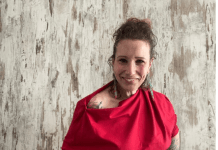By Lesley Thomas
Most women know the first spreadsheet. It’s the one that tracks income, expenses, savings, and goals — tidy, logical, and reassuringly black and white. But there’s a second spreadsheet, one that doesn’t live on your laptop. It lives quietly in your mind, tallying guilt, pride, fear, and self-worth. It measures how safe you feel earning, spending, or even speaking about money. One is financial. The other is emotional. And the truth is, they’re never separate. Every decision you make about money runs through both. Yet while we’re taught how to manage the financial spreadsheet, few of us ever learn to understand the emotional one. For most women in business, this hidden layer silently influences their choices, confidence, and long-term success.
The Hidden Data in Our Emotions
A spreadsheet is only as accurate as the data you enter. If the numbers are wrong, the results will be too. The same principle applies to money decisions. When those decisions are driven by outdated emotional “data” :beliefs shaped by childhood, past relationships, or fear; they can distort the outcomes in subtle but powerful ways. Many women excel at managing money for their teams or clients, yet hesitate when it comes to investing in themselves. They know how to handle budgets, but not always how to feel deserving. They can easily advocate for a business expense but hesitate to reward their own growth. That quiet tension comes from the emotional spreadsheet, full of unspoken formulas and inherited beliefs that shape how women value themselves and their work. For example, thoughts like “I’ll save when I earn more” or “I don’t want to seem greedy” are not financial truths; they’re emotional equations. And when your emotional and financial spreadsheets don’t align, stress builds. You feel the gap between what you know logically and what you feel internally. The emotional spreadsheet holds the real data behind why you undercharge, delay decisions, or resist asking for what you’re worth. Seeing it clearly is the first step to rewriting your financial story.
Why Knowledge Alone Doesn’t Create Confidence
It’s tempting to believe that financial confidence comes from knowing more, the best budgeting tool, reading another book, attending another webinar. But knowledge alone doesn’t create peace of mind. If it did, every woman who downloaded a money app would feel secure. Confidence comes from congruence when your financial and emotional decisions finally align. When you feel calm, capable, and connected to your choices. That’s the point where money stops being something to control and starts becoming something to collaborate with. Our emotional spreadsheets rarely start with us. They’re inherited from family conversations, cultural conditioning, and early experiences. Maybe you grew up hearing that money was stressful, or that ambition made women seem selfish. Perhaps you watched others struggle, and part of you still fears repeating that story. These beliefs become the invisible data shaping your financial behavior. The beautiful thing is, once you become aware of them, you can begin to rewrite them. You can update the formula. And that’s where genuine financial confidence begins not from perfection, but from presence.
Balancing the Two for Real Wealth
When women begin comparing their two spreadsheets, something remarkable happens. They start noticing emotional patterns behind financial ones where generosity becomes avoidance, or where responsibility turns into resentment. They begin asking new, empowering questions:
“What emotion is driving this decision?”
“Am I spending for progress or for proof?”
“Is this choice rooted in fear or in self-trust?”
This kind of reflection shifts everything. It transforms money from a source of pressure into a mirror of growth. Balancing the two spreadsheets doesn’t mean restricting yourself. It means aligning your internal state with your external goals. Across industries, women are now creating a quiet revolution, building money confidence from the inside out. They’re not chasing hustle or perfection; they’re building emotional safety around money. They’re rewriting stories that once kept them small, and in doing so, transforming the way they lead, spend, and succeed.
That’s when financial clarity starts to feel natural. Conversations about pricing or investing stop feeling uncomfortable. Decision-making becomes easier because it’s rooted in alignment, not anxiety. If you opened your two spreadsheets today, the financial and the emotional, would they tell the same story? Most women find they don’t. But that gap isn’t failure; it’s insight. It shows you exactly where your growth begins. Imagine checking your emotional spreadsheet as often as your bank balance. Instead of asking, “How much do I have left?” ask, “How do I feel about what I have?” Instead of focusing on what you can afford, consider, “What am I allowing myself to experience?” That small shift changes everything. It moves you from control to connection, from scarcity to sufficiency. Because when women bring their emotions and actions into harmony, confidence naturally follows. It’s not loud and it’s not instant — but it’s lasting.
So this month, take a few quiet moments to open both spreadsheets. Look honestly at your numbers, and compassionately at yourself. Notice where your logic and emotion still compete. Then begin updating both, side by side. That’s where balance begins. And that’s where money confidence quietly takes root — not just in your business, but in your entire life.













